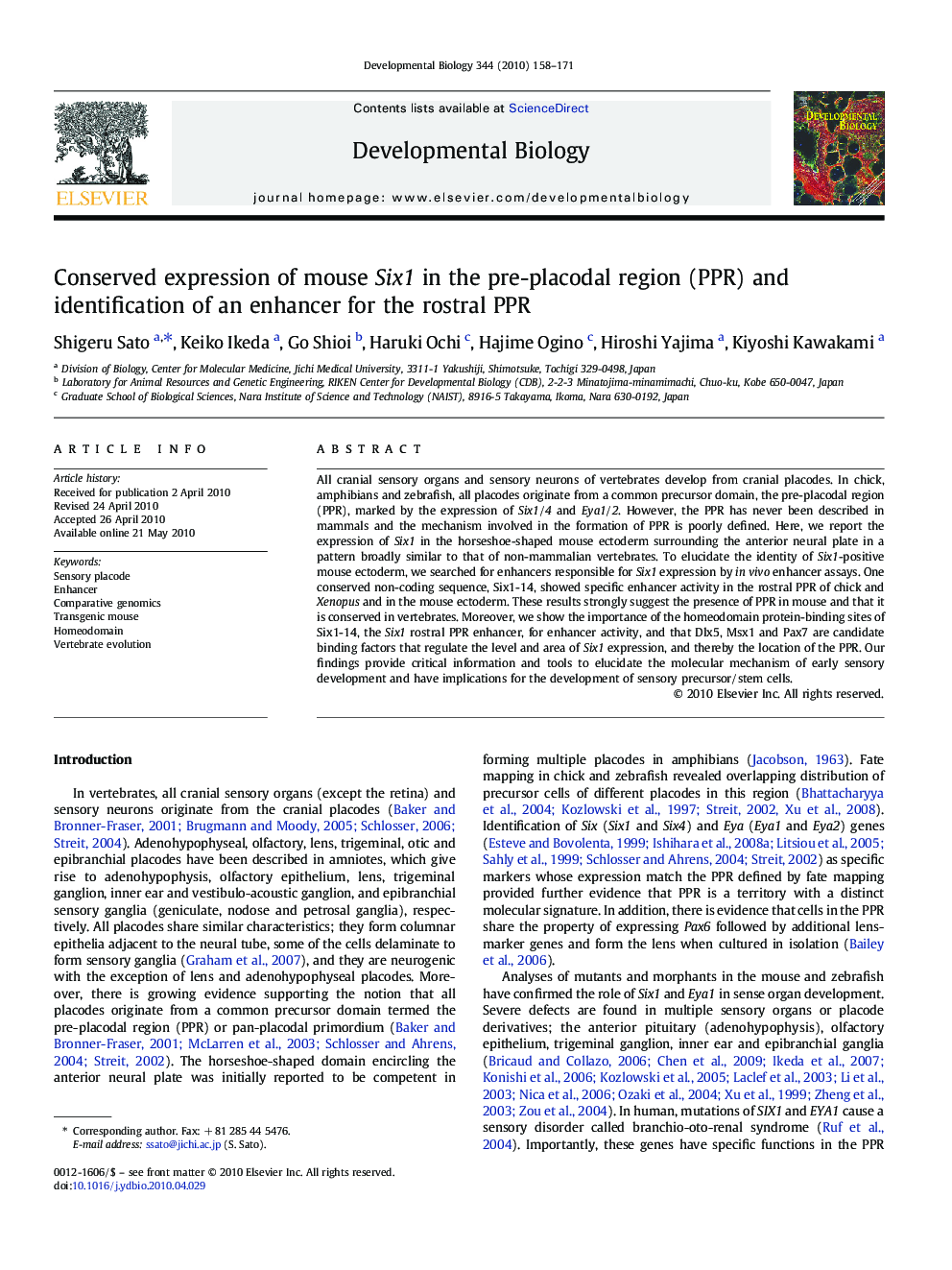| Article ID | Journal | Published Year | Pages | File Type |
|---|---|---|---|---|
| 10932862 | Developmental Biology | 2010 | 14 Pages |
Abstract
All cranial sensory organs and sensory neurons of vertebrates develop from cranial placodes. In chick, amphibians and zebrafish, all placodes originate from a common precursor domain, the pre-placodal region (PPR), marked by the expression of Six1/4 and Eya1/2. However, the PPR has never been described in mammals and the mechanism involved in the formation of PPR is poorly defined. Here, we report the expression of Six1 in the horseshoe-shaped mouse ectoderm surrounding the anterior neural plate in a pattern broadly similar to that of non-mammalian vertebrates. To elucidate the identity of Six1-positive mouse ectoderm, we searched for enhancers responsible for Six1 expression by in vivo enhancer assays. One conserved non-coding sequence, Six1-14, showed specific enhancer activity in the rostral PPR of chick and Xenopus and in the mouse ectoderm. These results strongly suggest the presence of PPR in mouse and that it is conserved in vertebrates. Moreover, we show the importance of the homeodomain protein-binding sites of Six1-14, the Six1 rostral PPR enhancer, for enhancer activity, and that Dlx5, Msx1 and Pax7 are candidate binding factors that regulate the level and area of Six1 expression, and thereby the location of the PPR. Our findings provide critical information and tools to elucidate the molecular mechanism of early sensory development and have implications for the development of sensory precursor/stem cells.
Related Topics
Life Sciences
Biochemistry, Genetics and Molecular Biology
Cell Biology
Authors
Shigeru Sato, Keiko Ikeda, Go Shioi, Haruki Ochi, Hajime Ogino, Hiroshi Yajima, Kiyoshi Kawakami,
